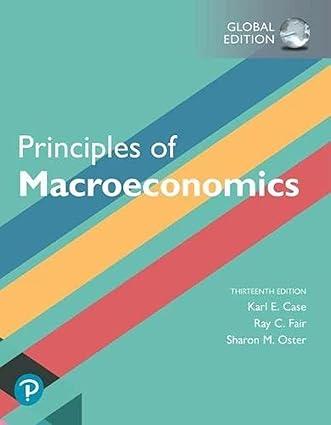Most economic interventions are made in response to an unsatisfactory situation based on inferences from available data.
Question:
Most economic interventions are made in response to an unsatisfactory situation based on inferences from available data. The aim of experimental evaluations, or randomized controlled trials (RCTs), is to establish an ideal comparison group by design from the beginning of an intervention.
Government programs often use regression discontinuity to set a threshold for receiving treatment, allowing a researcher to use individuals very close to the threshold as a control group.
A 2007 study by economists Esther Duflo, Rachel Glennerster, and Michael Kremer shows that impact assessment is complex and requires a comparison of the current situation of the beneficiaries of a policy to the situation they might have faced in lieu of the policy. Participants are randomly assigned to the treatment group or the comparison group, ensuring that there is almost no difference between the two groups. As established in the study, this implies that the outcome is not due to a systematic difference between the two groups that would have existed even without the application of the treatment.
Since it is difficult to effectively compare beneficiaries to non-beneficiaries, it is not always possible to derive a useful conclusion of a measure. In fact, it may sometimes have detrimental consequences. According to the study (Duflo et al.), the way a control group is built may have a strong impact on the outcomes. So a decision maker may choose the results that best suit their situation, but derive limited effects.
In 2009, Behaghel, Crépon, and Gurgand developed a new test for the effectiveness of a personalized support measure for the unemployed in France. The study found that comparable control groups are formed by drawing lots from a qualified population. By establishing two groups, the beneficiary and the non-beneficiary, the researchers could establish the efficiency of a policy and measure its impact on the declining unemployment levels In his article “Short-Run Subsidies and Long-Run Adoption of New Health Products: Evidence from a Field Experiment,”
French economist Pascaline Dupas used an experimental approach to test the price elasticity of goods in the health sector in Africa.3 To do so, the difference between free and paid distribution of health products, which is a major debate for health policies, was tested. The approach used the regression discontinuity procedure, and provided 644 households with different vouchers, ranging from 0 to 250 Kenyan shillings, to purchase mosquito nets. The results showed that 98 percent of the population with a voucher for a free mosquito net did get the net while 50 percent of those who received a 50 shillings voucher actually purchased the net. Among those who would have to pay 190 and 250 Kenyan shillings, only 11 percent bought a mosquito net. The conclusion from such a study is that even in the health sector the price elasticity is very high.

Questions
Can you think of another situation for which a regression discontinuity technique might be useful?
Step by Step Answer:

Principles Of Macroeconomics
ISBN: 9781292303826
13th Global Edition
Authors: Karl E. Case,Ray C. Fair , Sharon E. Oster





